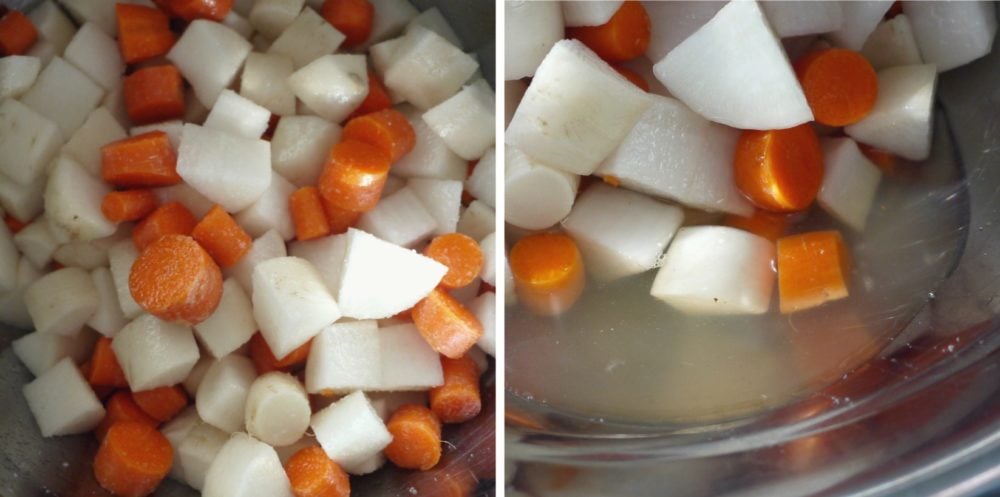This post may contain affiliate links. Please see our disclosure policy.

My favorite fermented food hands-down is kimchi. I grew up eating it, and it goes well with almost everything. Not only that, there are so many amazing health benefits in eating fermented foods like kimchi. They promote digestion because of the healthy bacteria like lactobacilli and probiotics, aid in weight loss, boost immunity, and some studies show that they prevent cancer.
While cabbage kimchi is a more popular and well-known version in America, the traditional process of making it is time consuming with a long wait time for the fermentation. I got no patience for that. With radish kimchi, called kkakdugi in Korean, you need less ingredients, and it can be fermented in a day or 2 so you can enjoy it soon after you make it.


With its perfect crunch and spiciness, you’ll find it seriously addicting. I eat it almost every day with my meals and I feel like I’m less bloated afterwards. Make fermented, raw foods an everyday part of your diet for optimal health!


CARROT & RADISH KIMCHI (KKAGDUGI)
Ingredients
- 2 lbs Korean or daikon radishes
- 1 lb carrots
- 1 tbsp & 1 tsp sea salt
- 5 cloves garlic, minced
- 1 inch ginger, finely grated
- 1/3 cup preservative & MSG-free fish sauce (can sub for coconut aminos or tamari sauce)
- 1/2 cup Korean coarse red pepper flakes (Add more or less depending on your spice level)
- 4 stalks green onions, chopped
Instructions
- Rinse the radishes and carrots and cut off any small hairs on the skin. (You can also peel the skin, I leave it on.)
- Cut the radishes and carrots into bite sized cubes and put them in a large bowl.
- Coat the mixture with sea salt evenly.
- Let it rest for 30 minutes so they have time to sweat.
- Drain out most of the juice but leave about 2 tbsp to 1/4 cup in the mixture.
- Add minced garlic, grated ginger, fish sauce, red pepper flakes, and chopped onions.
- Mix everything well so the seasonings are evenly coated.
- Transfer to a glass jar with an airtight lid, pressing down the mixture gently as you pour it in.
- Close the lid and let it sit outside the fridge at room temperature out of sunlight for 24-48 hours while it ferments.
- It's ready when you open the lid and you see small bubbles escaping off the top and the kkadugi has a strong, sour smell.
- Store in the fridge and eat it with EVERYTHING.











I cut the cubes to about what you have shown on your picture but turns out to be too hard to crunch on. I guess we are elderly and teeth not that strong anymore. I would cut cubes down to 1/4″ bite size or 1/8″ slides, but it’s very tasty. Thank you.
Great Recipe! – Have made it 4 times, and the recipe got written down in my family cookbook.
I apologize if I a completely missing it, but I don’t see the amount of sugar you put in the recipe necessary for fermentation. How much do you need and when do you put it in?
Thanks!
No sugar necessary! The natural sugars in the radish and carrots will aid with the fermentation. 🙂
would carrot kimchi be as effective as the cabbage one? and would it be more beneficial to the gut than having yogurt?
They all have similar probiotics, but different strains which we can all benefit from. I usually tend to eat more kimchi than yogurt because I always prefer savory over sweet, and I don’t do well with dairy.